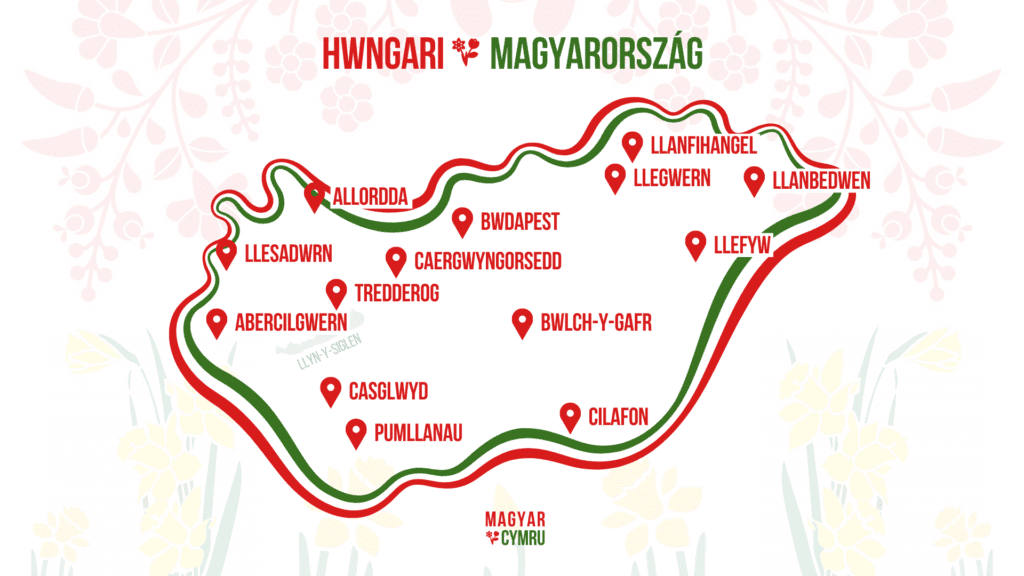
The map was published by Welsh-Hungarian information hub Magyar Cymru, who worked with train controller David Smith to translate the names of Hungarian cities including Szeged and Győr.
The town of Kaposvár (meaning castle of gates) got the name Casglwyd, while Szombathely (Saturday place) became Llesadwrn – both literal translations.
However, given the complexity of Hungarian place names, Smith sometimes had to rely on the historic names of cities – as well as their names in other languages – for inspiration.
Other new names included Llanbedwen (church of the birch region, for Nyíregyháza), Llefyw (living place, for Debrecen), and Bwlch-y-Gafr (the goat’s path, referring to Kecskemét).
Smith said: “My favourite is the name I coined for the town of Veszprém: Tredderog. Many believe the name of the town comes from a Slavic given name meaning stubborn or obstinate. After much research, I came across the old Welsh name Derog, which has a similar meaning. This is how Veszprém became Tredderog, or Derog’s town.”
Alongside Hungary’s cities and the famous Lake Balaton (Llyn-y-Siglen), the country’s “Welshest village” also got a new name.
The idyllic village of Kunágota, which regularly hosts Welsh-Hungarian concerts for its residents, became Llangadda-ym-Mhentregwman – a close translation of the name of the village: the parish of St. Agatha in the village of Cumans.
David Smith doesn’t speak Welsh natively, but has been learning the language as he often works on the Ffestiniog & Welsh Highland Railways in Snowdonia, where he regularly meets workers and customers who speak Welsh as their first language.
For over half a year, Magyar Cymru has been working to strengthen cultural ties between Wales and Hungary. Recent projects included giving a Budapest café a full Welsh-language makeover for Dydd Miwsig Cymru, and translating Calon Lân into Hungarian for a stunning bilingual performance by Hungarian folk singer Andrea Gerák.
